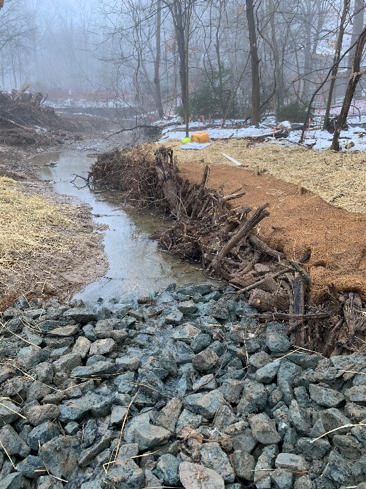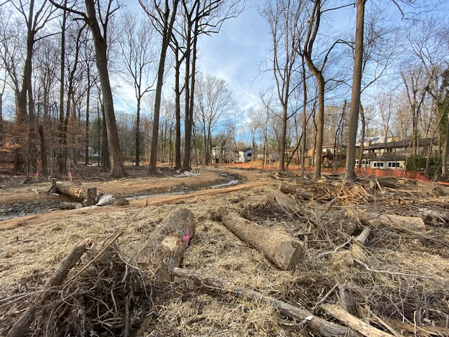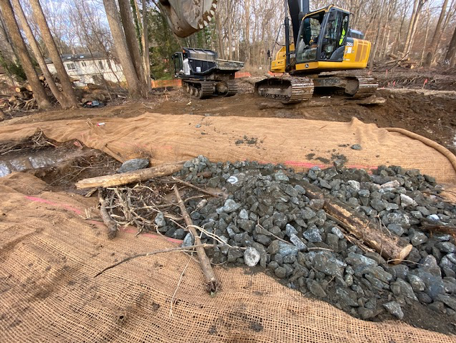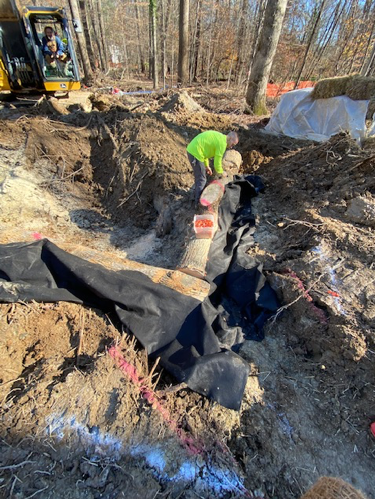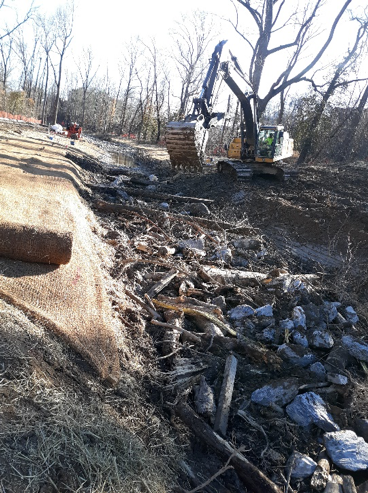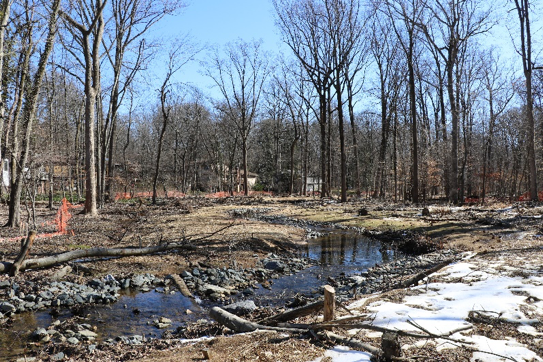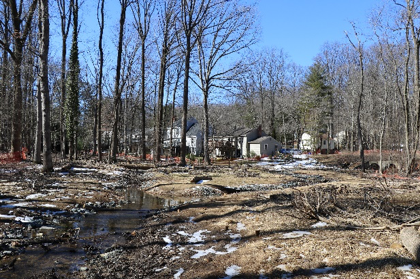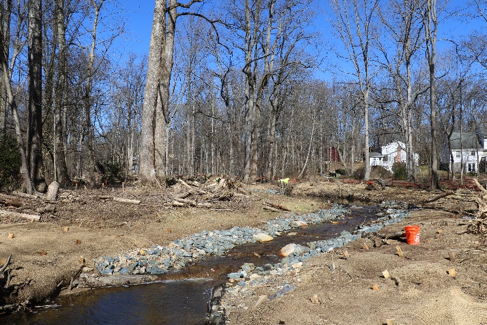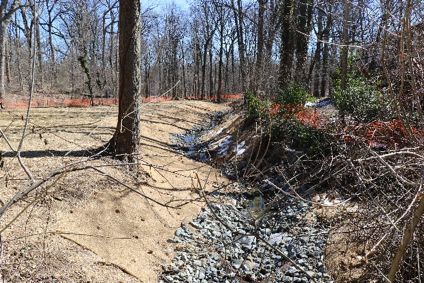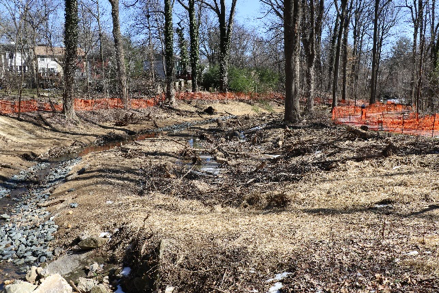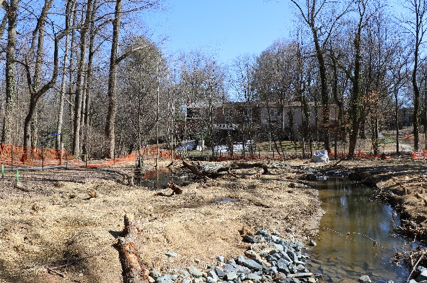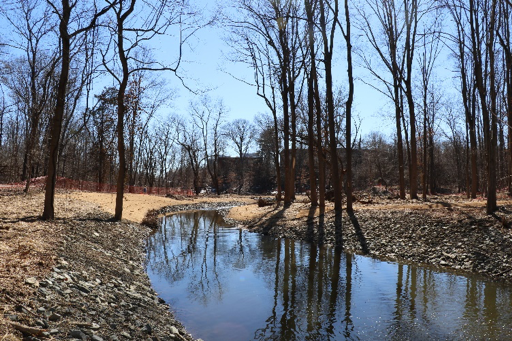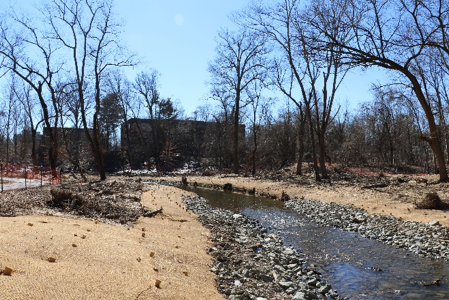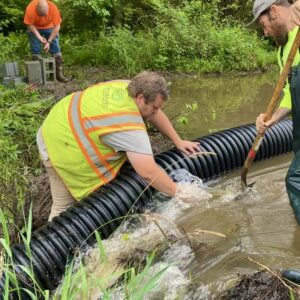The Chesapeake Bay was once so healthy that in 1608, Captain John Smith, the first European to explore its waters wrote, “that abundance of fish, lying so thick with their heads above water, as for want of nets we attempted to catch them with a frying pan.” The waters of the Patuxent River flowed clean and cool into the Chesapeake.
Over the next 200 years the land would be settled and virtually all the forests in Howard County were cleared several times over, chopped down for building material and fuel. Farmland, mills, and factories lined the banks of the Patuxent River. Towns and cities grew up around them. All of these played their part in the decline of the Chesapeake Bay watershed.
In the heart of Howard County lies Columbia, a 53-year old planned community famous for interweaving green spaces in between its curvilinear streets. Over the years the increasing volume of water coursing through Columbia’s streams has gouged out deep, incised channels that funnel sediment and nutrients into its 3 lakes, the Little Patuxent River, and eventually the Chesapeake itself. Proud of their heritage as a community connected to nature, Columbia Association partnered with the State Highway Administration and Ecotone to restore and reconnect 6,500 feet of stream to its floodplain.
Every 4 to 6 years the residents of Columbia pay millions of dollars to have their 3 lakes dredged. Ecotone is in the process of helping them save money, enhance the health of their streams, and ultimately improve the quality of water in the Patuxent River and Chesapeake Bay. The expected reduction in sediment alone is estimated at 30%. That will result in less frequent dredging and a savings of millions of dollars to Columbia residents.
The project takes place on 3 different sites located in Columbia along 2 tributaries that feed into Wilde Lake, and along the main stem flowing from Wilde Lake into Lake Kittamaqundi. The restoration consists of reconnecting the streams to their respective floodplains, installing stone riffles, deep pools, wetland cells, building log vanes and toe wood structures from trees harvested on-site, and roughing up the floodplain with the remaining woody debris to further slow the water’s velocity during storm events.
It is not easy living next to a construction zone while working from home during a pandemic. Our neighbors on this project were certainly put to the test. Residents (many of them original homeowners from the late ’60s) that witnessed trees coming down around their property were very vocal about the loss of “their forest.” As the Ecotone team and Columbia Association reviewed with them the benefits of opening the canopy and restoring the stream to a more natural state, they began to understand the benefits of the project even if they could not completely “embrace the ugly” that comes with the construction stage. The fact that the Columbia Association would realize millions of dollars of savings through reduced dredging of its lakes helped some feel more at ease about the disruptions in their neighborhood.
The project was fully funded by MDOT/SHA. Work began in September and was completed in February. It was a very tight timeline and the crews that worked there faced a multitude of delays and obstacles along the way. They accepted them as a challenge and worked with the design team and others to overcome each and every one. To minimize disruption on Columbia’s highly trafficked pedestrian paths, construction along the busier paths was scheduled for later in the project when the weather would be colder, and less people would be outside. For every neighbor that was upset and opposed to the project ,there was another that came by each day to stop and watch the show. They waved to the Ecotone team and their kids stared wide eyed at the movements of the mighty machines and the men that operated them. Within weeks after construction, wildlife began moving back into the area as owls, heron, falcon, ducks, deer, raccoon, foxes, and others became acquainted with their new home.
The Chesapeake Bay may never be as healthy as it was in 1608 when Captain Smith first sailed its waters and attempted to fish with frying pans. But the residents of Columbia who endured months of noise, dirt, and disruption can proudly say that they are doing their part to improve the bay and the headwaters that feed it.

Figure 1 Preconstruction 1 
Figure 2 Preconstruction 2 
Figure 4 Snowy Riffle 
Figure 5 Toewood 1 
Figure 6 Toewood 2 
Figure 7 Embrace the Ugly 
Figure 8 Woody Riffle 
Figure 9 Log Vane 
Figure 10 Another Woody Riffle 
Figure 11 Trib 1 a 
Figure 12 Trib 1 b 
Figure 13 Trib 1 c 
Figure 14 Trib 2 a 
Figure 15 Trib 2 b 
Figure 16 Trib 2 c 
Figure 17 Trib 3 a 
Figure 17 Trib 3 b



